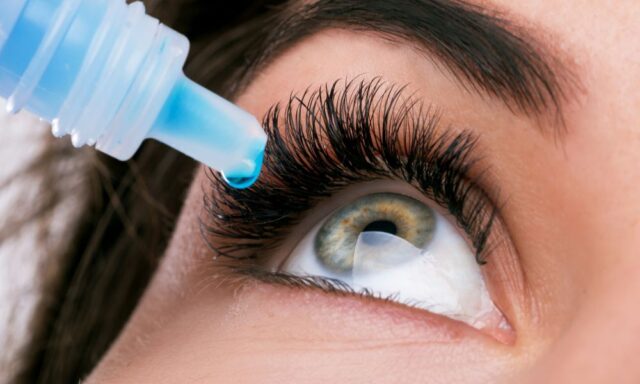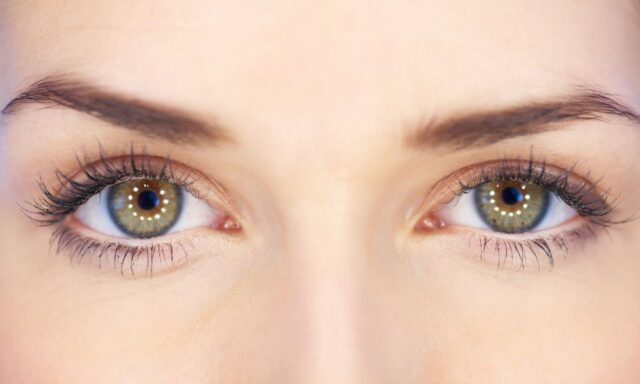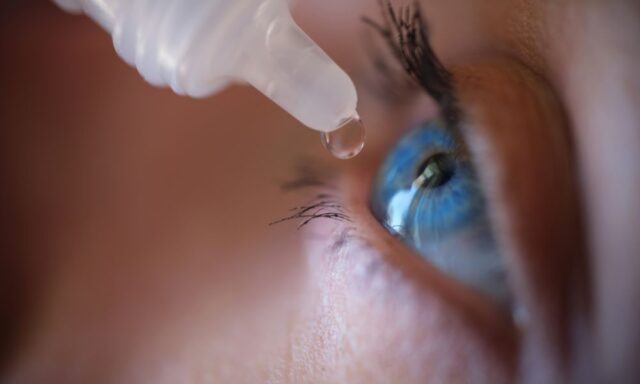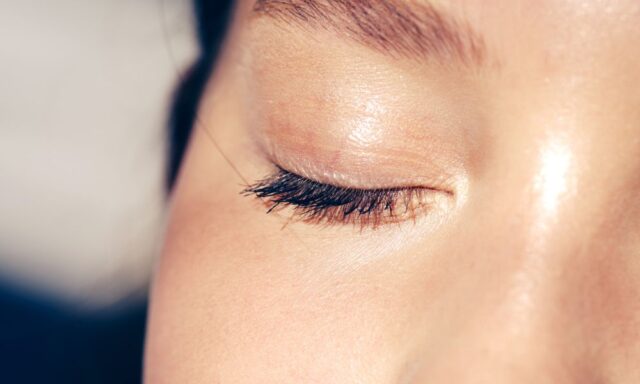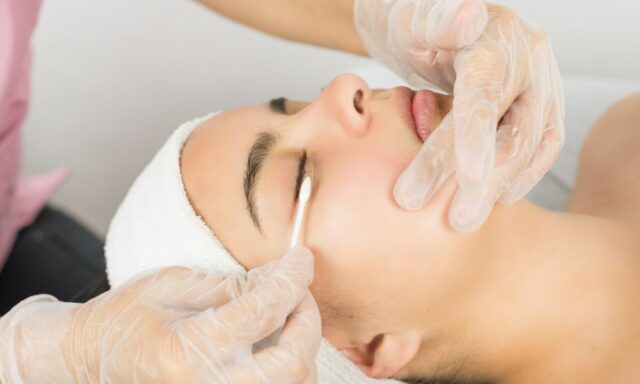Herbs for Arthritis
Arthritis, a prevalent condition characterized by inflammation and stiffness in the joints. Affects millions worldwide, significantly impacting quality of life. In the pursuit of relief, many turn to herbal remedies as complementary or alternative treatments. The use of herbs for arthritis management has garnered attention for their potential therapeutic benefits and fewer side effects compared to conventional medications. From turmeric and ginger to Boswellia and devil’s claw. Various herbs boast anti-inflammatory and analgesic properties, offering hope for alleviating symptoms and improving mobility. Understanding the efficacy and safety of these herbal remedies is crucial for individuals seeking natural approaches to managing arthritis. In this exploration, we delve into the world of herbs for arthritis. Examining their potential benefits, risks, and practical considerations for integrating them into arthritis management regimens.
Definition of Medicine
Medicine can be defined as the science and art of maintaining and restoring health through the diagnosis. Treatment, and prevention of illness and injury. It encompasses various disciplines, including medical sciences, clinical practice, and public health, all aimed at promoting well-being and longevity. From ancient healing traditions to modern medical breakthroughs. The concept of medicine has evolved over centuries, driven by advancements in scientific knowledge and healthcare practices.
Importance of Medicine in Healthcare
The significance of medicine in healthcare cannot be overstated. It serves as the cornerstone of modern healthcare systems. Guiding medical professionals in their efforts to diagnose diseases, prescribe appropriate treatments, and promote preventive measures. Medicine not only addresses the immediate health needs of individuals but also contributes to broader public health initiatives. Such as disease surveillance, vaccination programs, and health education campaigns. Moreover, medicine fosters interdisciplinary collaboration among healthcare providers, researchers, policymakers, and community stakeholders. Ensuring comprehensive and coordinated care for patients of all ages and backgrounds. Ultimately, medicine serves as a catalyst for health promotion, disease prevention, and the advancement of human well-being on a global scale.
Branches of Medicine
Medicine branches out into various specialized fields, each focusing on specific aspects of healthcare delivery and patient care. These branches encompass a wide range of medical specialties, catering to diverse patient populations and healthcare needs.
Internal Medicine
Internal medicine, also known as general medicine, is a branch of medicine that deals with the diagnosis, treatment. And management of adult patients’ complex and chronic medical conditions. Internal medicine physicians, also called internists, are trained to provide comprehensive primary care services. Including preventive care, health maintenance, and the diagnosis and treatment of various diseases affecting internal organs such as the heart, lungs, kidneys, and gastrointestinal tract. They often serve as primary care physicians or consultants for patients with complex medical problems. Coordinating care across different specialties and healthcare settings.
Surgery
Surgery is a medical specialty that involves the use of operative techniques to diagnose, treat, and manage a wide range of injuries, diseases, and deformities. Surgeons, trained in various surgical techniques and procedures. Work to restore and enhance the function of diseased or injured organs and tissues through surgical intervention. Surgical specialties encompass a diverse array of subspecialties, including general surgery, orthopedic surgery, neurosurgery, cardiovascular surgery, plastic surgery, and more. Surgeons collaborate closely with other healthcare professionals. Such as anesthesiologists, nurses, and surgical technologists, to ensure safe and effective surgical outcomes for patients.
Pediatrics
Pediatrics is the branch of medicine dedicated to the healthcare needs of infants, children, and adolescents, focusing on their physical, emotional, and developmental well-being. Pediatricians, specialized physicians trained in pediatric medicine, provide comprehensive medical care for children from birth through adolescence. Addressing a wide range of pediatric conditions and concerns. They play a crucial role in preventive care, early intervention. And health promotion for children, including well-child visits, immunizations, developmental screenings, and management of acute and chronic illnesses. Pediatric specialists, such as pediatric cardiologists, pediatric neurologists, and pediatric oncologists, offer specialized care for children with complex medical needs, working collaboratively with pediatricians and other healthcare professionals to ensure optimal outcomes for pediatric patients and their families.
Obstetrics and Gynecology
Obstetrics and gynecology (OB/GYN) is a medical specialty focused on the care of female reproductive health, encompassing both obstetrics, the care of pregnant women and their unborn babies, and gynecology, the diagnosis and treatment of disorders of the female reproductive system. Obstetricians provide prenatal care, attend childbirth, and offer postnatal care to ensure the health and well-being of both mother and baby. Gynecologists diagnose and treat conditions such as menstrual disorders, infertility, pelvic organ prolapse, and gynecological cancers. Together, OB/GYN specialists play a critical role in women’s healthcare, addressing a wide range of reproductive health needs across the lifespan.
Psychiatry
Psychiatry is a medical specialty dedicated to the diagnosis, treatment, and prevention of mental, emotional, and behavioral disorders. Psychiatrists are physicians who assess patients’ mental health through comprehensive evaluations, diagnose psychiatric conditions, and develop personalized treatment plans. Which may include psychotherapy, medication management, and other interventions. They work with individuals across diverse populations. Including children, adolescents, adults, and older adults, addressing conditions such as depression, anxiety, bipolar disorder, schizophrenia, and substance use disorders. Psychiatrists also collaborate with other healthcare professionals to provide integrated care for patients with complex medical and psychiatric needs. Promoting holistic approaches to mental health and well-being.
Radiology
Radiology is a medical specialty that utilizes medical imaging techniques to diagnose and treat diseases and injuries Arthritis. Radiologists, physicians trained in radiology, interpret various imaging modalities, including X-rays, computed tomography (CT), magnetic resonance imaging (MRI), ultrasound, and nuclear medicine scans, to visualize internal structures and detect abnormalities within the body. Radiology plays a crucial role in diagnosing a wide range of medical conditions across different organ systems, guiding treatment decisions, and monitoring treatment response. Radiologists work closely with referring physicians and other healthcare providers to ensure accurate and timely interpretation of imaging studies, contributing to patient care and management.
Anesthesiology
Anesthesiology is a medical specialty focused on the administration of anesthesia and the management of pain during surgical procedures, diagnostic tests, and other medical interventions. Anesthesiologists, physicians trained in anesthesiology, evaluate patients’ medical histories, assess their anesthetic needs, and administer anesthesia medications to induce unconsciousness, pain relief, and muscle relaxation during procedures. They monitor patients’ vital signs and manage their physiological responses throughout the perioperative period, ensuring safe and effective anesthesia delivery. Anesthesiologists also provide pain management services for patients with acute and chronic pain conditions, utilizing various pharmacological and interventional techniques to alleviate suffering and improve quality of life.
Pathology
Pathology is a medical specialty concerned with the study of disease processes, including the causes, mechanisms, and effects of diseases on the body’s tissues and organs. Pathologists, physicians trained in pathology, examine tissue specimens, blood samples, and other biological fluids to diagnose diseases, identify abnormalities, and provide critical information for patient management and treatment planning. Pathology encompasses various subspecialties, including anatomical pathology, clinical pathology, and forensic pathology, each focusing on different aspects of disease diagnosis and laboratory medicine. Pathologists play a vital role in interdisciplinary healthcare teams, collaborating with clinicians, surgeons, and other healthcare professionals to ensure accurate diagnosis, prognosis, and treatment of patients across different medical specialties.
Pharmacology
Pharmacology is the branch of medicine that focuses on the study of drugs and their effects on living organisms. It encompasses various aspects, including drug discovery, development, pharmacokinetics, pharmacodynamics, and therapeutic applications. Pharmacologists investigate how drugs interact with biological systems, elucidate their mechanisms of action, and evaluate their efficacy and safety profiles for clinical use. Pharmacology plays a crucial role in healthcare by providing the scientific foundation for drug therapy, guiding the development of new medications, optimizing treatment regimens, and minimizing adverse drug reactions. Pharmacologists collaborate with healthcare providers, pharmaceutical companies, regulatory agencies, and other stakeholders to advance drug discovery and development, promote rational drug use, and improve patient outcomes.
Emergency Medicine
Emergency medicine is a medical specialty focused on the diagnosis, treatment, and management of acute and life-threatening medical conditions and injuries. This physicians, trained in emergency medicine, work in hospital emergency departments (EDs) to provide immediate medical care to patients of all ages and backgrounds. They are skilled in rapid assessment, resuscitation, stabilization, and triage of patients with critical illnesses and injuries, including trauma, cardiac emergencies, respiratory distress, and neurological emergencies. Emergency medicine practitioners utilize a multidisciplinary approach, collaborating with nurses, paramedics, specialists, and support staff to deliver timely and comprehensive emergency care. They also play a key role in disaster preparedness and response, public health initiatives, and community education to promote emergency preparedness and safety.
Others (e.g., Dermatology, Ophthalmology)
In addition to the core medical specialties, there are numerous other medical specialties and subspecialties that address specific areas of healthcare and patient needs. These specialties encompass a wide range of medical disciplines, including dermatology, ophthalmology, otolaryngology (ENT), urology, rheumatology, allergy and immunology, gastroenterology, and more. Each specialty focuses on diagnosing and treating conditions related to specific organ systems, anatomical structures, or medical conditions. Dermatologists specialize in the diagnosis and treatment of skin, hair, and nail disorders, while ophthalmologists focus on eye care and vision health. Other specialties address conditions such as ear, nose, and throat disorders, genitourinary conditions, autoimmune diseases, gastrointestinal disorders, and more. Together, these specialties contribute to the comprehensive delivery of healthcare services, addressing a broad spectrum of medical needs and improving patient outcomes and quality of life.
Common Medical Conditions
Medical science encounters a variety of prevalent health conditions, ranging from cardiovascular diseases to respiratory ailments. Understanding these conditions is pivotal for effective healthcare delivery and public health initiatives.
Cardiovascular Diseases
Cardiovascular diseases (CVDs) constitute a significant burden on global health. Encompassing a range of conditions affecting the heart and blood vessels. These conditions include coronary artery disease, hypertension, heart failure, stroke, and peripheral vascular disease. Risk factors for CVDs include smoking, poor diet, physical inactivity, obesity, diabetes, and genetics. Prevention and management strategies involve lifestyle modifications. Such as regular exercise, healthy diet, smoking cessation. and medication therapy to control blood pressure, cholesterol levels, and blood glucose. Timely diagnosis and treatment are crucial in reducing the morbidity and mortality associated with cardiovascular diseases. Emphasizing the importance of cardiovascular health promotion and disease prevention efforts.
Infectious Diseases
Infectious diseases are caused by pathogenic microorganisms, including bacteria, viruses, fungi, and parasites, and can spread from person to person through various means. Such as airborne transmission, direct contact, or ingestion of contaminated food or water. Common infectious diseases include influenza, pneumonia, tuberculosis, HIV/AIDS, malaria, and hepatitis. Prevention strategies focus on vaccination, hand hygiene, sanitation, safe food handling practices, and infection control measures. Treatment typically involves antimicrobial medications, antiviral drugs, and supportive care to alleviate symptoms and prevent complications. In addition to individual-level interventions, public health measures, such as disease surveillance, outbreak investigations, contact tracing, and quarantine measures. Play a critical role in controlling the spread of infectious diseases and protecting community health.
Respiratory Diseases
Respiratory diseases affect the airways, lungs, and respiratory system. Impairing the ability to breathe properly and exchange oxygen and carbon dioxide. Common respiratory conditions include asthma, chronic obstructive pulmonary disease (COPD), pneumonia, bronchitis, and obstructive sleep apnea. Risk factors for respiratory diseases include smoking, air pollution, occupational exposures, respiratory infections, and genetic predisposition. Treatment approaches vary depending on the specific condition and may include medications (e.g., bronchodilators, corticosteroids), oxygen therapy. Pulmonary rehabilitation, and lifestyle modifications (e.g., smoking cessation, avoidance of respiratory triggers). Patient education and self-management strategies are essential for improving respiratory health outcomes and enhancing quality of life for individuals with respiratory diseases. Additionally, public health interventions aimed at reducing environmental pollutants and promoting respiratory health awareness can help mitigate the burden of respiratory conditions on population health.
Neurological Disorders
Neurological disorders affect the brain, spinal cord, and nerves, leading to a variety of symptoms and impairments in neurological function. Conditions such as Alzheimer’s disease, Parkinson’s disease, multiple sclerosis, epilepsy, and stroke fall under this category. These disorders can result from genetic factors, environmental exposures, traumatic injuries, infections, or autoimmune reactions. Treatment approaches for neurological disorders aim to alleviate symptoms, slow disease progression, and improve quality of life. Interventions may include medications (e.g., antiepileptic drugs, dopamine agonists), physical therapy, occupational therapy, speech therapy, and surgical procedures (e.g., deep brain stimulation). Multidisciplinary care teams, including neurologists, neurosurgeons, neuropsychologists. And rehabilitation specialists, collaborate to provide comprehensive care and support for individuals with neurological disorders.
Gastrointestinal Disorders
Gastrointestinal disorders affect the digestive system. Including the esophagus, stomach, intestines, liver, gallbladder, and pancreas, leading to a range of symptoms such as abdominal pain, diarrhea, constipation, bloating, and nausea. Common gastrointestinal conditions include gastroesophageal reflux disease (GERD), irritable bowel syndrome (IBS), inflammatory bowel disease (IBD), peptic ulcer disease, and liver cirrhosis. Risk factors for gastrointestinal disorders include poor diet, stress, smoking, alcohol consumption, infections, and genetic predisposition. Treatment strategies focus on symptom management, dietary modifications, medication therapy (e.g., proton pump inhibitors, antispasmodics, immunosuppressants). And surgical interventions (e.g., bowel resection, and liver transplantation). Gastroenterologists, hepatologists, and gastrointestinal surgeons play key roles in the diagnosis and management of gastrointestinal disorders. Working closely with other healthcare providers to optimize patient outcomes and improve digestive health.
Endocrine Disorders
Endocrine disorders affect the endocrine system, which comprises glands that produce hormones regulating various physiological processes. Including metabolism, growth, reproduction, and stress response. Conditions such as diabetes mellitus, thyroid disorders, adrenal disorders, and pituitary disorders are common examples of endocrine disorders. These disorders can result from hormonal imbalances, autoimmune reactions, tumors, or genetic mutations. Treatment approaches for endocrine disorders aim to restore hormonal balance, manage symptoms, and prevent complications. Interventions may include medication therapy (e.g., insulin, thyroid hormone replacement), lifestyle modifications (e.g., diet, exercise). Hormone replacement therapy, and surgical interventions (e.g., thyroidectomy, adrenalectomy). Endocrinologists specialize in the diagnosis and management of endocrine disorders. Collaborating with other healthcare professionals to provide comprehensive care and support for patients with hormonal imbalances.
Musculoskeletal Disorders
Musculoskeletal disorders affect the muscles, bones, joints, ligaments, tendons. And other connective tissues, leading to pain, stiffness, swelling, and impaired mobility. Conditions such as osteoarthritis, rheumatoid arthritis, osteoporosis, back pain, and sports injuries fall under this category. Risk factors for musculoskeletal disorders include aging, obesity, physical inactivity, repetitive movements, trauma, and genetic predisposition. Treatment approaches for musculoskeletal disorders aim to alleviate symptoms, improve function, and prevent complications. Interventions may include medication therapy (e.g., analgesics, anti-inflammatory drugs). Physical therapy, occupational therapy, bracing or splinting, and surgical procedures (e.g., joint replacement, spinal fusion). Orthopedic surgeons, rheumatologists, physiatrists, and physical therapists collaborate to provide multidisciplinary care for individuals with musculoskeletal disorders. Promoting musculoskeletal health and enhancing quality of life.
Mental Health Disorders
Mental health disorders encompass a broad range of conditions that affect mood. Behavior, and cognition, Herbs for arthritis leading to significant distress and impairment in daily functioning. Common mental health disorders include depression, anxiety disorders, bipolar disorder, schizophrenia, post-traumatic stress disorder (PTSD), and eating disorders. Herbs for Arthritis These disorders can arise from various factors, including genetic predisposition, traumatic experiences, chronic stress, substance abuse, and environmental factors. Treatment for mental health disorders typically involves a combination of psychotherapy, medication therapy, and lifestyle modifications. Mental health professionals, such as psychiatrists, psychologists, counselors, and social workers. Collaborate to provide comprehensive and individualized care for individuals with mental health disorders, promoting recovery, resilience, and overall well-being.
Cancer
Cancer is a group of diseases characterized by the abnormal growth and spread of cells. Leading to the formation of tumors and invasion of surrounding tissues. Cancer can occur in any part of the body and can have various causes. Including genetic mutations, environmental exposures, lifestyle factors, and viral infections. Common types of cancer include breast cancer, lung cancer, colorectal cancer, prostate cancer, and skin cancer. Treatment approaches for cancer depend on the type, stage, and location of the disease and may include surgery. Chemotherapy, radiation therapy, targeted therapy, immunotherapy, and hormone therapy. Multidisciplinary cancer care teams, including oncologists, surgeons, radiation oncologists, pathologists, and other specialists. Collaborate to develop personalized treatment plans and provide supportive care for individuals with cancer. Advances in cancer research and treatment have led to improved outcomes and survival rates for many cancer patients. Underscoring the importance of early detection, timely intervention, and comprehensive cancer care.
Read more articles: How to Use Miracle Leaf for Arthritis
The Final Thought
The diverse array of common medical conditions outlined underscores the complexity of healthcare delivery and the importance of interdisciplinary collaboration in addressing the diverse needs of patients. From cardiovascular diseases to mental health disorders and cancer. These conditions impact millions of lives worldwide, highlighting the critical role of healthcare professionals in diagnosis, treatment, and prevention. By fostering innovation, promoting health equity, and prioritizing patient-centered care. Healthcare systems can strive to improve outcomes and enhance quality of life for individuals across the lifespan. As medical knowledge continues to advance and healthcare technologies evolve. Ongoing efforts in research, education, and public health initiatives will be essential in addressing current challenges and shaping the future of healthcare for generations to come. Ultimately, by working together to address common medical conditions and promote health and well-being. We can build healthier communities and a brighter future for all.





